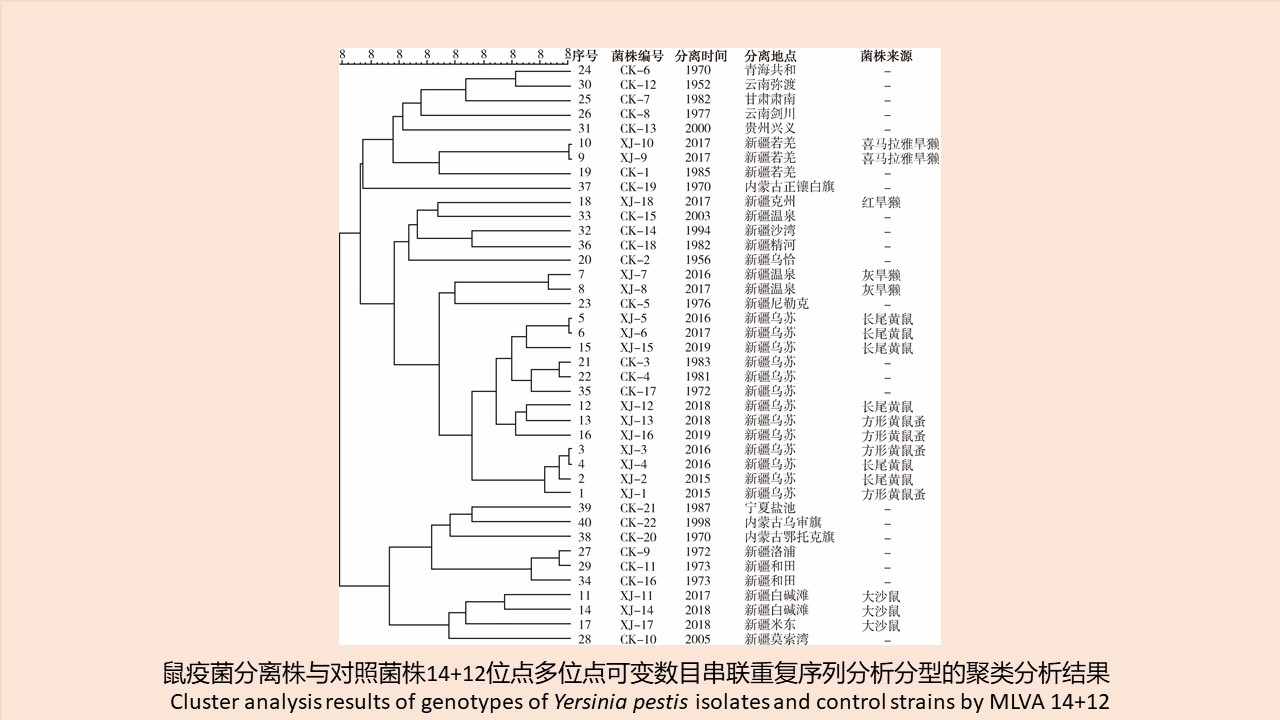 PDF(999 KB)
PDF(999 KB)


新疆鼠疫菌株多位点可变数目串联重复序列基因分型研究
李博, 崔燕, 刘遵季, 古丽阿依·包凯西, 罗勇军, 麦迪娜·肖开提, 王启果, 雒涛
中国媒介生物学及控制杂志 ›› 2021, Vol. 32 ›› Issue (6) : 666-671.
 PDF(999 KB)
PDF(999 KB)
 PDF(999 KB)
PDF(999 KB)
新疆鼠疫菌株多位点可变数目串联重复序列基因分型研究
 ({{custom_author.role_cn}}), {{javascript:window.custom_author_cn_index++;}}
({{custom_author.role_cn}}), {{javascript:window.custom_author_cn_index++;}}MLVA genotyping of Yersinia pestis isolates from natural foci in Xinjiang, China
 ({{custom_author.role_en}}), {{javascript:window.custom_author_en_index++;}}
({{custom_author.role_en}}), {{javascript:window.custom_author_en_index++;}}
| {{custom_ref.label}} |
{{custom_citation.content}}
{{custom_citation.annotation}}
|
/
| 〈 |
|
〉 |